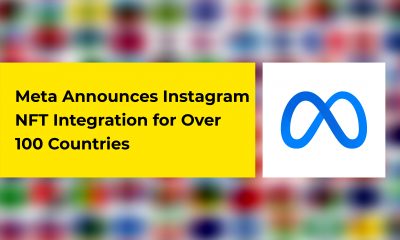News
Flow blockchain embraces Ethereum with EVM on Flow

The Flow community has unveiled a groundbreaking proposal known as ‘EVM on Flow,’ designed to achieve full Ethereum Virtual Machine (EVM) equivalence on the Flow blockchain.
This proposal aims to enable Ethereum developers to deploy their DApps on Flow without making substantial code changes, simplifying the process of migrating or creating DApps on this innovative platform.
Flow blockchain is a fast, decentralized, and developer-friendly blockchain designed to be the on-chain home for mainstream IPs including NBA, NFL, Doodles, and Mattel, as well as an open ecosystem where anyone can build.
The layer-one blockchain, which was created by a team with experience working at CryptoKitties, Dapper Wallet, NBA Top Shot, has a native token, FLOW which is used to pay network fees for transactions and smart contract computations and can also be traded or invested.
According to Flow, the introduction of EVM compatibility on Flow offers a game-changing advantage to Ethereum developers. It allows them to harness the benefits of the Flow blockchain without the need to learn a new programming language or undertake complex code modifications.
Additionally, the brain behind the proposal, who is also the co-founder of Dapper Labs and Lead Architect at Flow, Dieter Shirley, stated that the process of integration involves the creation of a “gateway” software that can wrap and submit Ethereum transactions to the Flow blockchain. The key highlight is that no fundamental code changes are necessary to achieve full Ethereum Virtual Machine equivalence on Flow.
He added that this ‘gateway’ software enables the Flow ecosystem to potentially support Ethereum-based decentralized applications (dApps). It allows developers to wrap external transactions using Cadence, a smart contract programming language for Flow.
He also revealed that the proposal, which opens the door for the transfer of ERC-20 and ERC-721 tokens between the two networks, presents challenges that need to be addressed. Notable issues include mapping EVM gas fees to Cadence and ensuring seamless interoperability. Additionally, there is a need to finalize details regarding the EVM environment on Flow and its integration with the existing Flow infrastructure.
To solve this problem, the co-founder said that community input is critical in addressing the technical intricacies and ensuring the successful realization of EVM equivalence on Flow.
Read also; Ethereum.org unveils Q4 roadmap: new initiatives and redesigns















1 Comment